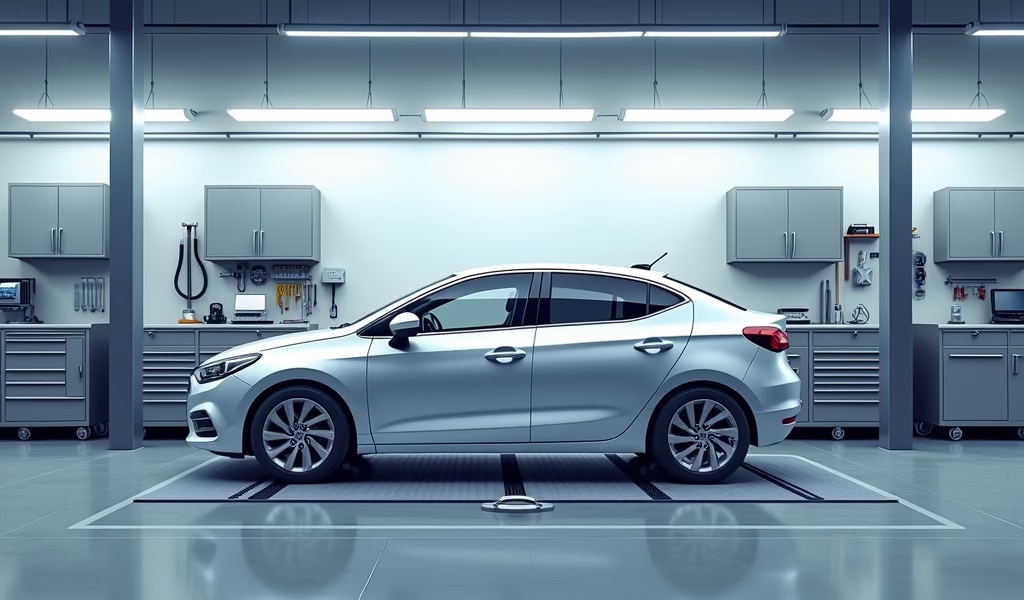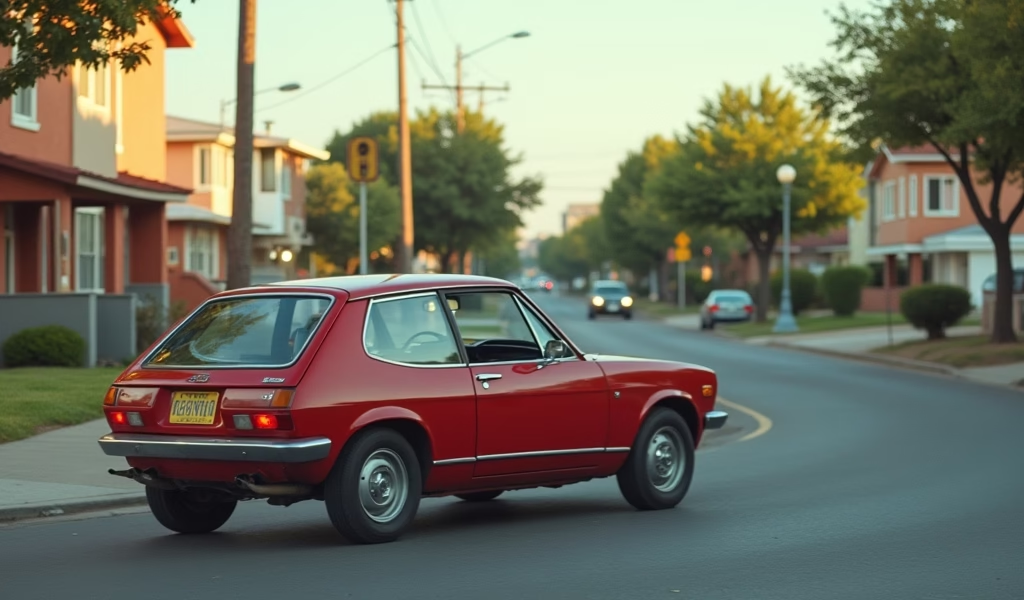Overview
This article provides young drivers with practical strategies to reduce their sky-high insurance premiums, including taking defensive driving courses, maintaining good grades, using telematics programs, making smart vehicle choices, and shopping strategically across multiple insurers. The guide emphasizes that while young drivers inevitably pay more, these tactics can reduce premiums by 30-50%, with real-world examples showing savings of over $1,000 annually.
Table of Contents
- Understanding Why Young Driver Premiums Are Sky-High
- What to Do Before Shopping for Insurance
- Proven Discount Strategies That Actually Work
- Making Smart Coverage Choices
- Advanced Shopping Techniques to Find the Best Rates
- How to Maintain Lower Rates Over Time
- Real-World Success Stories from Young Drivers
- Conclusion: Your Path to Affordable Coverage
- Frequently Asked Questions
Understanding Why Young Driver Premiums Are Sky-High
Finding affordable car insurance for young drivers often feels like trying to find a unicorn in a used car lot. As someone who’s helped hundreds of young drivers find better rates, I can tell you it’s challenging—but far from impossible.
First, let’s understand why insurance companies charge young drivers so much. It’s not personal—it’s statistical. Insurance is all about risk assessment, and the numbers tell a clear story:
- Drivers aged 16-19 are nearly three times more likely to be in a fatal crash than older drivers
- Young males under 25 typically have accident rates almost double their female counterparts
- Almost 40% of teen driver fatalities involve speeding
When insurance companies see a young driver’s application, they see these statistics walking through their door. Their pricing reflects this perceived risk, not who you actually are as a driver.
Other factors working against young drivers include limited driving history (insurers love data, and you haven’t generated much yet), minimal credit history, and often, poor vehicle choices that further drive up rates.
But here’s the good news—understanding these factors gives you a roadmap to lower premiums. In my years helping drivers navigate insurance waters, I’ve seen young drivers slash their premiums by 30-50% using the techniques we’ll cover.
What to Do Before Shopping for Insurance
Before you start collecting quotes, there’s important groundwork to lay that can dramatically impact your rates.

Your vehicle choice makes a massive difference in your insurance costs. That sporty coupe might look fantastic, but it could cost you thousands extra annually. As someone who’s worked in the automotive world for years, I recommend focusing on vehicles with:
- Excellent safety ratings and features
- Lower theft rates (check the IIHS vehicle safety ratings before buying)
- Reasonable repair costs
Family sedans, small SUVs, and certain minivans typically carry the lowest premiums. I’ve seen the difference between insuring a Honda Civic versus a Mustang for a 19-year-old amount to over $1,200 annually—for the same coverage!
Before getting quotes, gather all your information: driver’s license details, vehicle specifics (make, model, year, VIN), estimated annual mileage, and any current insurance information. Having everything ready streamlines the process and ensures accurate quotes.
Also, set realistic expectations. Even with every discount available, young drivers will pay more than experienced ones. The good news? These rates aren’t permanent. Each year of safe driving improves your standing with insurers.
Proven Discount Strategies That Actually Work
After helping countless young drivers find affordable coverage, I’ve identified several discount strategies that consistently deliver results:
1. Defensive Driving Courses
Completing a recognized defensive driving course can reduce premiums by 5-15%. Many insurers offer specific young driver programs that combine education with insurance discounts. The upfront cost of $50-100 for these courses pays for itself many times over.
From my experience, online courses are convenient, but in-person classes sometimes earn larger discounts. Ask potential insurers which specific courses they recognize before enrolling.
2. Good Student Discounts
That B average isn’t just good for your future—it’s immediate cash in your pocket. Maintaining a 3.0 GPA or higher can earn discounts up to 25% with many insurers. Studies consistently show students who perform well academically tend to be more responsible behind the wheel.
This discount alone can save hundreds annually and is available from almost every major insurer for full-time students. Keep those transcripts handy when quote shopping.
3. Telematics and Usage-Based Insurance
These technology-driven insurance options can be a young driver’s best ally. Telematics programs track driving habits through a mobile app or plug-in device, monitoring:
- Acceleration and braking patterns
- Speed maintenance
- Time of day driving
- Mileage
For cautious young drivers, these programs offer dual benefits: immediate enrollment discounts (often 5-10%) plus the opportunity for substantial ongoing discounts (up to 30%) when your actual driving proves safer than your age group suggests.
I’ve seen careful young drivers cut their premiums nearly in half after six months of monitored safe driving. If you’re confident in your driving habits, this approach is practically guaranteed to save money.
4. The Family Connection Strategy
The difference between an independent policy and joining your parents’ policy can be staggering—sometimes cutting costs in half. While you’ll still increase their premium, the family rate is typically much lower than going solo.
This approach works best if you’re living at home or are a full-time student away at college. Remember, though, that any accidents will affect your parents’ rates too. This arrangement makes the most sense for drivers with clean records.
Making Smart Coverage Choices
Buying excessive insurance is wasteful, but inadequate coverage leaves you vulnerable. After years in this field, here’s what I recommend for young drivers:
Understand State Requirements vs. Actual Needs
Every state has different minimum coverage requirements. While meeting these minimums keeps you legal, they rarely provide adequate protection after a serious accident. In most states, minimum liability coverage wouldn’t even pay for half the cost of a new vehicle if you’re at fault in an accident.
For young drivers with assets to protect (including future earnings), I typically recommend liability limits of at least 100/300/100 ($100,000 bodily injury per person, $300,000 per accident, $100,000 property damage). This coverage sweet spot balances affordability with meaningful protection.
Strategic Deductible Selection
Higher deductibles mean lower premiums—but can you afford to pay $1,000 out-of-pocket after an accident? A good compromise for young drivers: choose a higher deductible but keep a dedicated emergency fund for that amount.
From my experience working with young drivers, increasing your deductible from $500 to $1,000 typically saves about 10-15% on comprehensive and collision coverage. If that savings exceeds $100 annually, it’s usually worth considering.
Coverage Worth Having vs. Extras to Skip
Essential coverages for most young drivers include:
- Liability protection beyond state minimums
- Uninsured/underinsured motorist coverage (especially important for young drivers with newer vehicles)
- Roadside assistance (often very affordable and valuable for younger drivers)
For older vehicles worth less than $4,000, comprehensive and collision coverage might cost more than the car’s value. For that trusty old sedan that got you through high school, liability-only coverage might make financial sense.
Skip extras like car rental reimbursement if you have other transportation options and gap insurance if you didn’t finance your vehicle or made a substantial down payment.
Advanced Shopping Techniques to Find the Best Rates

Insurance shopping isn’t a simple transaction—it’s a strategic process that rewards thorough research. Here’s how to shop like a pro:
Use Multiple Comparison Tools
Don’t rely on a single comparison site. Each has different participating companies and pricing algorithms. Use at least three different comparison tools and supplement with direct quotes from companies like State Farm, USAA (if eligible), and other providers that don’t participate in aggregator sites.
I recommend creating a simple spreadsheet to track quotes, coverage details, and discounts offered. This organized approach prevents confusion and helps identify the best overall value—not just the lowest price.
The Direct Call Advantage
After getting online quotes, call agents directly. Mention your online quote and ask if they can identify additional discounts. Human agents often have flexibility that automated systems don’t—and can explain discount opportunities you might miss online.
In my experience, a 15-minute phone call can often uncover savings of 5-15% beyond what online quoting tools identify. Agents can also provide guidance on coverage combinations that balance protection and affordability.
Specific Young Driver Discounts to Request
When shopping, explicitly ask about:
- Distant student discounts (if you’re away at college without a car)
- Driver training discounts
- Safe vehicle discounts
- Low mileage discounts (particularly valuable if you drive less than 10,000 miles annually)
- Professional organization or alumni discounts
- Paid-in-full discounts (often 5-10% for paying the entire 6-month premium upfront)
Getting at least seven quotes before deciding sounds excessive, but I’ve consistently seen differences of over $1,000 annually between the highest and lowest quotes for identical coverage for young drivers. The time investment pays substantial dividends.
How to Maintain Lower Rates Over Time
Securing affordable insurance is just the starting line; keeping rates low requires ongoing attention. Here’s what works:
Handle Minor Incidents Strategically
For small claims near your deductible amount, consider paying out-of-pocket. A single claim can raise your rates by 20-40% for three years—potentially costing far more than the claim payment you’d receive.
I’ve seen too many young drivers file small claims (like a $1,200 fender bender) only to have their premiums increase by $800 annually for the next three years—a $2,400 premium increase for a $700 payout (after deductible). Do the math before filing.
Regular Policy Reviews
Set a calendar reminder to review your coverage every six months. Insurance rates for new drivers under 25 change rapidly as you age and gain experience. Companies also regularly adjust their algorithms and discount programs.
I recommend requesting new quotes annually, even if you’re satisfied with your current insurer. This practice keeps your current company honest and sometimes identifies substantial savings opportunities.
The Credit Score Connection
Few young drivers realize that in most states, credit scores significantly impact insurance rates. Building solid credit can lower your insurance as much as maintaining a clean driving record—another reason to develop healthy financial habits early.
Simple steps like making on-time payments, keeping credit card balances low, and limiting applications for new credit can improve both your credit score and your insurance rates over time. According to the Federal Reserve, drivers with poor credit pay 91% more for car insurance than those with excellent credit.
Real-World Success Stories from Young Drivers
These strategies aren’t theoretical—they work in practice. Here are real examples from young drivers I’ve worked with:
Michael’s Story: From $3,200 to $1,450
Michael, a 19-year-old college sophomore in Ohio, reduced his annual premium from $3,200 to $1,450 by:
- Completing a defensive driving course
- Enrolling in a telematics program
- Maintaining a 3.5 GPA
- Choosing a 2017 Honda Civic instead of the Subaru WRX he originally wanted
- Increasing his deductible from $500 to $1,000
The most impactful change? His vehicle choice alone saved nearly $800 annually.
Emma’s Story: $1,200 Annual Savings
Emma, a 22-year-old graduate in Texas, saved over $1,200 annually by:
- Shopping comprehensively (got 10 different quotes)
- Bundling renter’s insurance
- Paying her premium in full instead of monthly
- Taking advantage of her professional association membership discount
- Using a usage-based insurance program that rewarded her primarily daytime driving patterns
Emma’s persistence in quote shopping paid off—her lowest quote was 42% less than her highest for identical coverage.
Conclusion: Your Path to Affordable Coverage
Finding affordable insurance as a young driver requires more effort than most financial tasks—but the rewards are substantial. Every dollar saved on insurance is money that can build your emergency fund, pay down student loans, or simply enhance your quality of life.
Remember that each year of safe driving improves your insurance standing. The rate difference between a 17-year-old and a 25-year-old with clean records is astronomical. Your goal isn’t just saving money today, but positioning yourself for optimal rates throughout your driving lifetime.
The techniques outlined here have helped countless young drivers save hundreds—even thousands—on their car insurance. The key is approaching the process methodically rather than settling for the first quote you receive.
The best news? These high young driver rates are temporary. With clean driving habits and strategic shopping, you’ll eventually join the ranks of preferred drivers with preferred rates. Until then, these DIY strategies can make insurance far more affordable than most young drivers realize.
Frequently Asked Questions
At what age do car insurance rates go down?
Insurance rates typically begin decreasing at age 25, assuming you maintain a clean driving record. Some companies begin reducing rates gradually starting around age 21.
How much should a young driver expect to pay for car insurance?
Young drivers typically pay $1,500-$3,500 annually for full coverage, depending on location, vehicle, and driving record. Rural areas generally have lower rates than urban centers.
Does gender affect car insurance rates for young drivers?
In most states, young male drivers pay 10-15% more than female drivers due to statistical risk factors. Some states like California, Hawaii, and Massachusetts have banned gender-based pricing.
How much does a ticket increase insurance for a young driver?
A single speeding ticket can increase insurance rates by 20-30% for a young driver, often lasting three years. Multiple violations can lead to premium increases exceeding 100%.
Is it better for a young driver to be on their parents’ policy?
Yes, staying on a parents’ policy is almost always cheaper than getting an independent policy. This approach typically saves 40-60% compared to individual coverage for young drivers.


Pingback: cheapest car insurance for young drivers - knowsyourcar.com